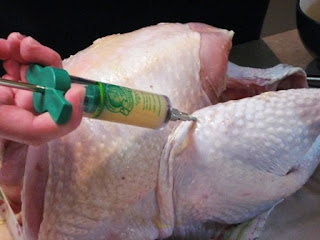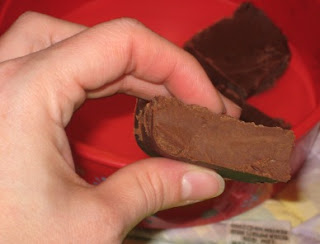My favorite Thanksgiving leftovers:
- Turkey sammiches
- Ham and cheese omelets
- Scalloped potatoes and ham
- More turkey sammiches
- Soup, soup, and more soup (such as ham, zucchini and potato soup)
- Turkey quesadillas
- Pepperoni and ham pizza
We’ve tackled those first four already, and after several days of sammiches, I needed to switch gears tonight and try some pizza. Now that I think I’ve created the perfect grilled pizza crust, I’m on a quest to perfect my indoor pizza versions, whether thin-crust, deep-dish, or hand-tossed.
This is a good, sturdy, hand-tossed pizza crust. It's a bit breadier and less chewy, so it can hold a lot of toppings. (I think this would be fabulous with a seasoned hamburger topping or for a taco pizza.) I also threw together some homemade sauce that went really well with the pepperoni, but might be a bit too strong to stand up to milder toppings.
And, of course, I tested this recipe with ham and pepperoni. Although I love most kinds of pizza toppings, this combo is my favorite. If it doesn't taste good with ham and pepperoni, it just won't do.
The dough recipe makes enough for about two 14” pizzas, and the sauce recipe is enough for at least 2 or 3 pizzas. You can bake the pizza on a regular pizza pan, but you might want to lower the oven temp and prebake the crust a bit to ensure that it cooks through before your toppings are annihilated by the heat.
Hand-Tossed Pizza
Makes 2 14”pizzas
Dough
1 pkg. active dry yeast
1 tsp. sugar
1 c. lukewarm water
¼ c. olive oil
2 tsp. salt
3 c. flour
Sauce
6 oz. tomato paste
8 oz. tomato sauce
¼-½ c. water (depending on your preferred thickness)
2 tsp. Worcestershire sauce
½ Tbsp. dried parsley
¾ Tbsp. Italian seasoning
1 tsp. garlic powder
½ tsp. sugar
½ tsp. dried basil
¾ tsp. dried oregano
½ tsp. pizza seasoning
½ tsp. salt
1/8 tsp. pepper
Preferred toppings (chopped ham and pepperoni, in my case)
Cheese (I used about ¾ c. of a pizza blend and ¼ c. of mozzarella)
1. Preheat a pizza stone in your oven at 500 degrees.
2. In a stand mixer bowl with the dough hook attached, combine yeast, sugar, and warm water. Let sit about 10 minutes. Add olive oil and salt. Turn mixer on low and slowly add flour. Turn mixer to medium and knead dough about 3-5 minutes, or until thoroughly combined and dough is starting to come up around the edges of the bowl. Remove dough and knead by hand a few times. Form a ball and place in a greased bowl. Cover and let rise about an hour, or until dough is doubled in size.
3. Remove dough from bowl and divide in half. Form into two balls and return to bowl. Cover and let rest about 10 minutes.
4. Meanwhile, combine sauce ingredients in a small bowl.
6. Transfer pizza to stone and bake about 10-12 minutes, or until crust is cooked through.
























































